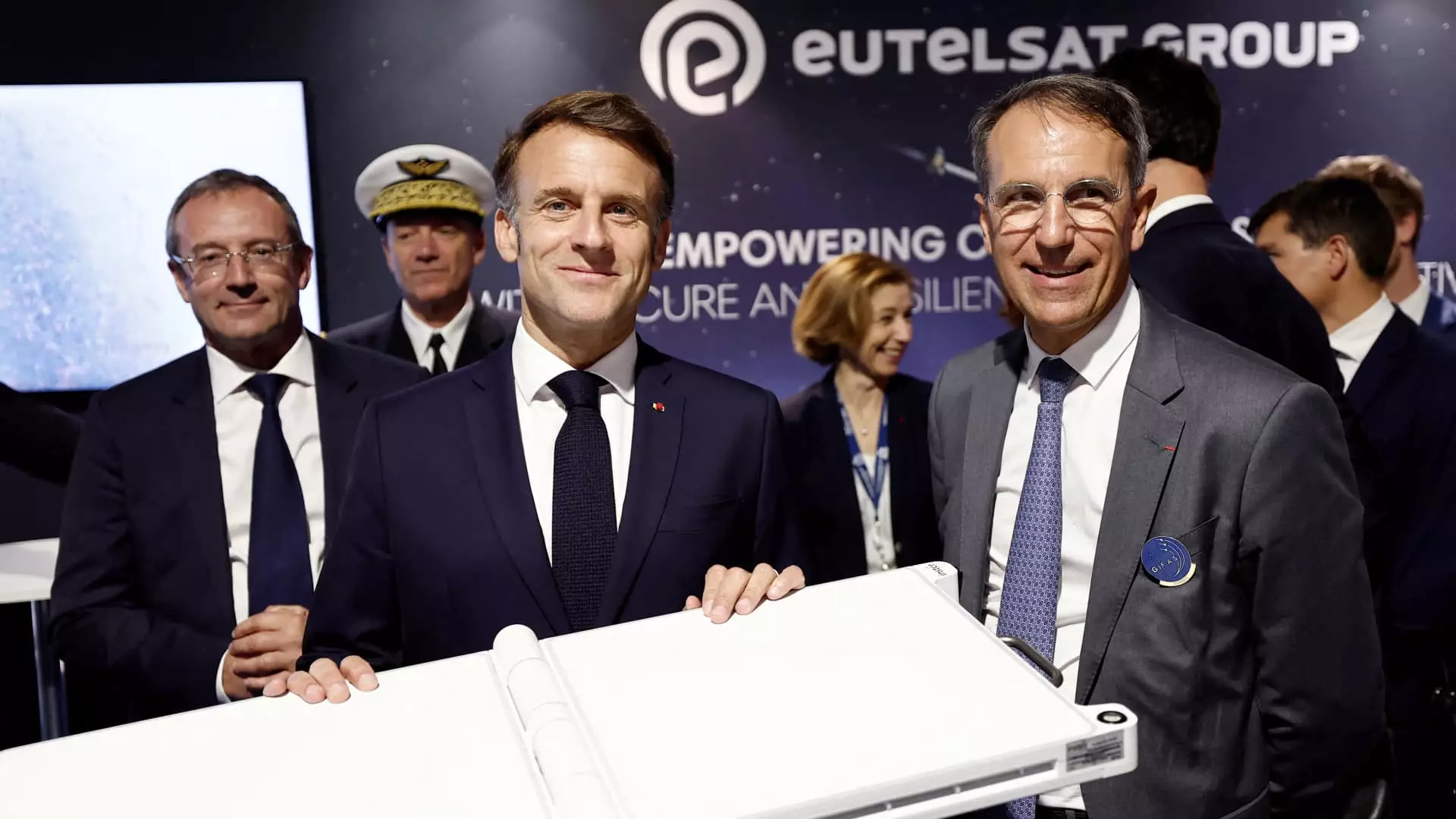Europe’s lofty ambition to construct a satellite broadband empire capable of challenging SpaceX’s Starlink is, for now, more wishful thinking than strategic triumph. The recent €1.35 billion investment from the French government in Eutelsat might seem like a monumental commitment, but it underscores a much deeper problem: Europe remains desperately behind in the space technology race, relying heavily on American innovation and infrastructure. Unlike the U.S., which enjoys a dynamic, commercially driven space ecosystem led by Elon Musk’s SpaceX, Europe is encumbered by fragmented efforts, cautious public investments, and an industrial ecosystem that struggles to keep pace with global market leaders.
A David Versus Goliath Mismatch in Orbital Ambitions
The sheer scale and scale-up velocity of Starlink’s constellation—a staggering 7,600 satellites—highlight the insurmountable challenge facing Eutelsat and its OneWeb satellite arm, which manages merely 650 satellites, most of which are nearing the end of their operational lives. This isn’t just a numbers game; it’s an issue of survivability and sustainability in technology terms. The French-backed venture must first replace aging assets before even marginally expanding its network, while Starlink continuously launches next-generation hardware, improving both capacity and user accessibility. The result is a widening technological chasm that Europe’s satellite initiatives are not poised to close anytime soon.
State Intervention: A Double-Edged Sword
The French government’s decision to become Eutelsat’s largest shareholder reflects an emerging belief that satellite communications are no longer merely commercial undertakings but strategic assets essential for national security and digital sovereignty. While this state-backed approach may secure capital inflows that fuel hardware development and network expansion, it risks bending Eutelsat towards bureaucratic inefficiency and political demands rather than competitive agility. Unlike SpaceX’s highly entrepreneurial, risk-taking model, Eutelsat now treads a delicate path between serving geopolitical priorities and maintaining commercial viability—a scenario that can easily stifle innovation and responsiveness.
Technical Shortcomings Beyond Satellite Count
Eutelsat’s reliance on a “bent-pipe” architecture—the system where satellites act primarily as relay stations for radio signals—reveals fundamental technological inferiority relative to Starlink’s fully integrated, mesh-networked approach. This architectural gap is not trivial; it affects latency, data throughput, scalability, and the ability to adapt quickly to dynamic operational demands. Simply doubling satellite numbers will not bridge this gap. Europe must rethink not only how many satellites it deploys but also the foundational design of these constellations to avoid perpetually trailing behind without meaningful strategic differentiation.
Strategic Positioning within Europe’s Geopolitical Context
Despite its setbacks, Eutelsat occupies a critical niche in Europe’s pursuit of technological sovereignty, particularly in sensitive sectors such as defense and corporate enterprise connectivity, where jurisdictional control over data transmission is paramount. The company’s role in providing an alternative satellite broadband service in regions like Ukraine—where Starlink plays a pivotal military role—illustrates how European actors seek not to outcompete but to supplement U.S. capabilities under conditions of geopolitical tension. This pragmatic stance acknowledges that complete parity with Starlink is unlikely in the short term. Still, carving out strategic relevance through niche applications could preserve European influence and security interests while larger challenges are resolved.
The Myopic View of European Space Autonomy
French President Emmanuel Macron’s call to boost Europe’s investment in space as a marker of international power is well-founded but risks overlooking the systemic hurdles plaguing the sector. The expectation that a larger satellite constellation alone will counterbalance the entrenched dominance of U.S. companies like SpaceX reflects a superficial understanding of technological innovation, market dynamics, and strategic competition. Europe must embrace a more radical overhaul involving deeper integration of public and private sectors, fostering faster innovation cycles, and prioritizing revolutionary satellite designs over incremental capacity increases. Without this shift, Europe’s satellite ambitions risk becoming a costly symbol of lagging behind rather than a declaration of genuine space leadership.
Leadership and Vision: What’s Missing?
Leadership plays a vital role in navigating the treacherous waters where commercial ambition intersects with national interests. Eutelsat’s recent CEO turnover signals organizational uncertainty amid heightened expectations. At a time when visionary leadership could spearhead European innovation, the company needs more than bureaucratic stability—it needs audacious plans that transcend merely playing catch-up with Starlink. Adopting a clear, long-term strategy emphasizing unique European strengths in enterprise-grade service, security, and data governance could create a sustainable competitive edge rather than futilely trying to mirror SpaceX’s scale.
The European approach to satellite broadband today is characterized by admirable, yet ultimately naïve, optimism in the face of overwhelming American technology dominance. Government intervention, while necessary for security reasons, cannot substitute for genuine industrial capability or the market-driven innovation that SpaceX exemplifies. Until Europe reconciles the dual goals of sovereignty and commercial excellence through coherent policy, investment, and leadership, efforts like Eutelsat’s will remain financially and technologically outmatched, serving more as geopolitical tokens than as true contenders in the rapidly evolving space economy.

